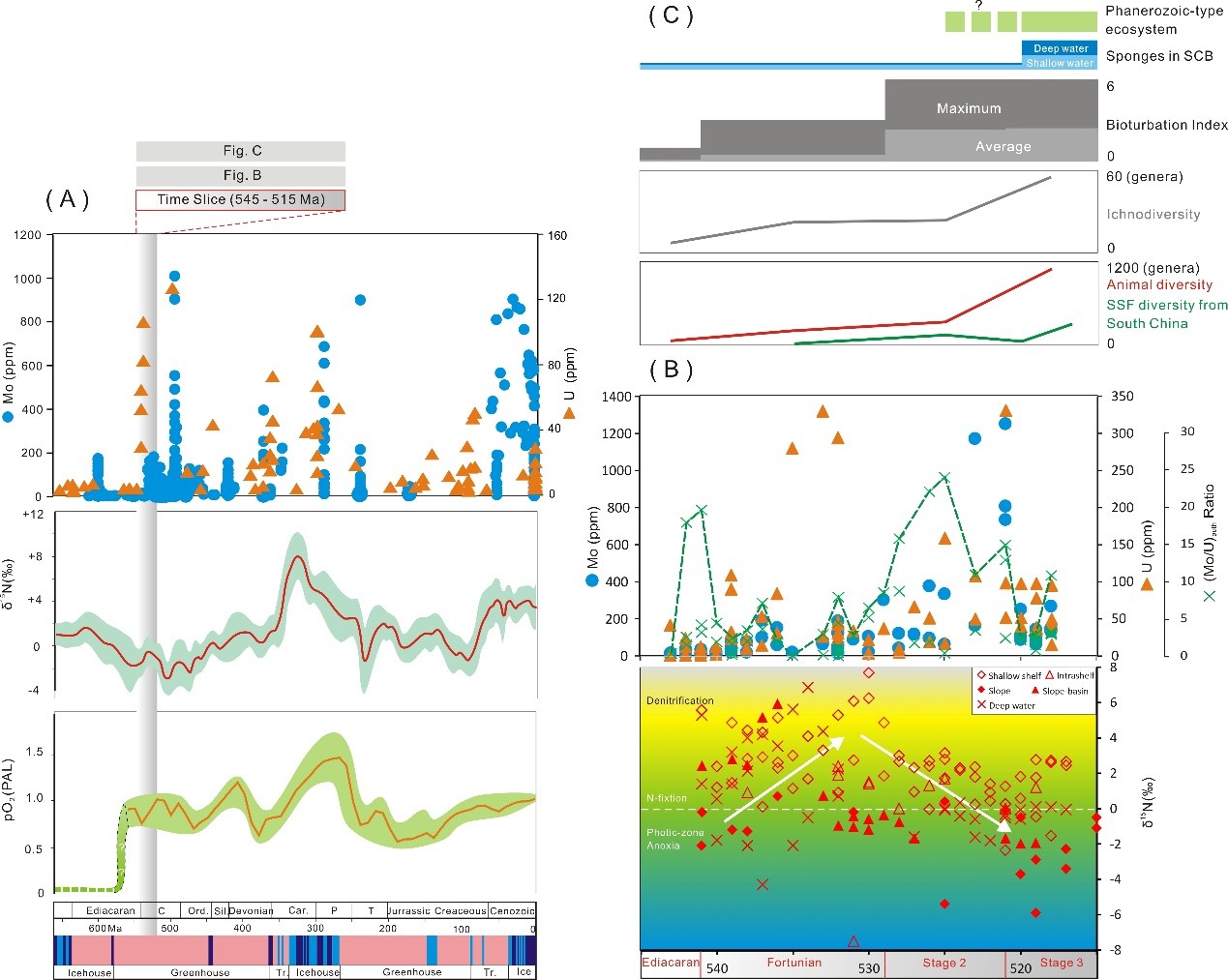
Paleoenvironments (glaciation, atmospheric and oceanic oxygenation) associated with the biodiversification
The Cambrian explosion of diverse bilaterian clades is considered to have proceeded in three phases preserved in the fossil record: (1) the appearance of basal metazoan phyla in Late Ediacaran time; (2) the first occurrence of biomineralization and the widespread occurrence of small shelly fossils (SSFs); (3) the emergence of the three supraphylogenetic clades during Cambrian stage 3. Though these biological events have been attributed to environmental modifications, notably oxygenation of the global ocean, specifics of the relationship between the emergence and diversification of metazoans and atmospheric-oceanic oxygenation remain unresolved.
Recently, Dr. ZHANG Junpeng and Pro. ZHANG Yuandong from Nanjing Institute of Geology and Palaeontology, Chinese Academy of Sciences, together with Pro. FAN Tailiang from China University of Geosciences (Beijing), utilized the geochemical proxy and N isotope record of the Ediacaran–Cambrian boundary preserved in intra-shelf basin, slope, and slope basin deposits of the Yangtze Sea to assess the ocean redox state during the Early Cambrian metazoan radiation.
During Early Cambrian time, the water column of the shallow shelf remained oxygenated, accumulating widespread carbonate sediment as exemplified by the Xiaotan section in the eastern Yunnan province and studied sections in the Three Gorge Area. Intra-shelf basins, including the Zhongnan section, became anoxic or even euxinic, as suggested by the present and previous investigations. Further, the presence of largely negative δ15N excursions as well as elevated Mo/U and Fepy/FeHR ratios observed in the studied sections may reflect local establishment of photic zone anoxia. Clearly, δ15N profiles of the deeper water Nangao and Longbizui sections display more consistently negative values than are documented from the intra-shelf Zhongnan section suggesting that these deposits experienced a protracted period of strongly reducing conditions. In summary, the commonly ferruginous sub-photic water column of the Yangtze Sea margin experienced local anoxia or euxinia in intra-shelf basin and upper slope regions of the basin. Such diverse paleo-marine environmental conditions characterized the continental shelf of the Yangtze Sea in the face of the Cambrian explosion.
They proposed that the coupling of ocean chemistry and Early Cambrian animal diversification was not a simple cause-and-effect relationship, but rather a complex interaction. Specifically, it is likely that animal diversification expanded not only temporally but also spatially from the shallow shelf to deep-water environments in tandem with progressive oxygenation of the extensive continental margin.
This study was financially supported by Chinese Academy of Sciences (XDB10010100, XDPB05) and Ministry of Land and Resources of the People’s Republic of China (2009GYXQ15).
Download:
